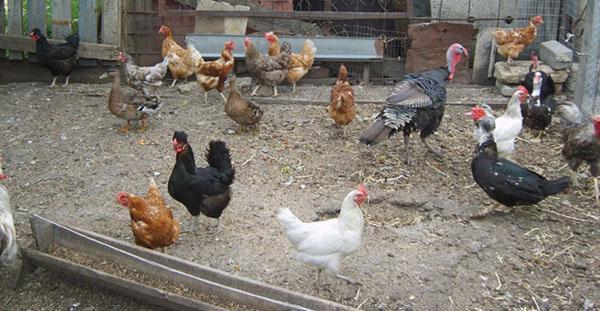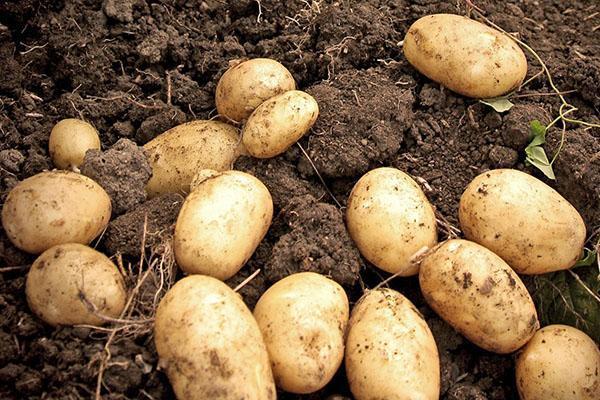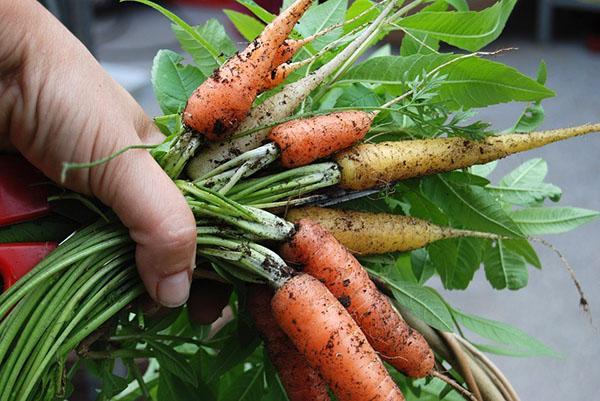What to do in September at the dacha farm?
 In summer, summer residents keeping poultry and livestock managed to prepare enough roughage. In September, the chores do not end at the summer cottage. The beginning of autumn is the time to take care of the harvesting of root crops and silage. Poultry breeders have to cull the herd, and goat breeders take care of the future offspring.
In summer, summer residents keeping poultry and livestock managed to prepare enough roughage. In September, the chores do not end at the summer cottage. The beginning of autumn is the time to take care of the harvesting of root crops and silage. Poultry breeders have to cull the herd, and goat breeders take care of the future offspring.
Harvesting feed in September

They, as well as zucchini, pumpkins, corn and its greens, weeds and carrion from fruit trees are used fresh, are used to make silage.
Forage from plant residues is obtained through lactic acid fermentation without access to air. In order to obtain a dense mass in a pit or a container chosen for ensiling, all components are pre-crushed. The process takes place at a humidity of 60–75%. If the mixture is too dry, ensiling will slow down or stop altogether. Excessive moisture degrades the quality of the finished product.
 You can adjust and maintain the optimal composition by adding certain components:
You can adjust and maintain the optimal composition by adding certain components:
- zucchini, cucumbersfresh grass and water increase the moisture of the composition;
- straw, grain processing waste, crushed beans leaves make the silage thicker, more saturated, less watery.
Boiled potatoes and carrots increase the nutritional value of the feed. Such silage is useful for fattening poultry and pigs. The filled pit is closed, and after 3-4 weeks the readiness is checked. Good quality food is identified by the smell of soaked apples or kvass.
If the harvest of beets and carrots allows meeting the needs of the inhabitants of the farm, in September the root crops are harvested for future use, stacking them in piles or boxes, pouring layers of sand or dry sawdust.
This is especially important for carrots, which can dry out or rot in the second half of winter.
Rabbit care in September

At the beginning of autumn, rabbit breeders cull breeding animals. The queens that gave birth for 3-4 years should give way to young individuals. To exclude closely related crossbreeding and the accumulation of possible defects, a new sire is acquired from another farm or selected from another breeding line. The rejected animals are formed into groups for feeding.
Taking care of goats and sheep in September

Goats and the sheep are unassuming and, as long as there is succulent grass, can be in the pasture. This makes it easier to care for the animals in the fall, and the need for feed is relatively low for these livestock. Therefore, in September, the herd can be kept outdoors, keeping under the roof only at night. In places where animals are kept, litter is used in early autumn.
When mating is carried out in September, the replenishment of the herd appears at the beginning of spring, and the kids and lambs that have grown stronger by the arrival of heat will already go out to the pasture together with the adult livestock in the summer.
In autumn and winter, the expecting offspring of the queens are fed with concentrates that provide excellent fatness.
Poultry at the dacha farm
 By September, young layers are growing up in the dacha farm. The best ones are worthy of replacing the previous generation.To provide themselves and their families with high-quality eggs, the herd is culled in the fall.
By September, young layers are growing up in the dacha farm. The best ones are worthy of replacing the previous generation.To provide themselves and their families with high-quality eggs, the herd is culled in the fall.
The dacha livestock can do without a rooster, and a lot depends on the choice of laying hens. The most productive birds in a dacha economy can be carried daily.
Several parameters serve as a kind of selection criteria. Examining adult chickens, the summer resident should pay attention to:
- on the general condition of the bird, type of plumage, fatness, health;
- on the shape, tone and color of the comb and earrings, which in the best layers are soft, but not flabby, red and well developed;
- on the cloaca, it should be moist, large and moist.
 To evaluate pullets, attention is paid not only to physical development, the absence of defects, but also to the activity of the bird, its ability to seek food, interest in the world around it, and mobility.
To evaluate pullets, attention is paid not only to physical development, the absence of defects, but also to the activity of the bird, its ability to seek food, interest in the world around it, and mobility.
In September, the repair and cleaning of premises for birds and livestock is completed at the farm. Floors in chicken coop cleaned of the old litter, sprinkle the base with slaked lime, and make a layer of chopped straw, sawdust, foliage or peat on top. The material chosen as bedding should be loose and cover the floor with a layer of 10-15 cm.
Subsequently, the litter is turned up. To save time, summer residents add waste from threshing grain to the filler. In search of the remaining grains, the bird itself perfectly loosens the litter, giving access to the interior of the air and suppressing the development of pathogenic microflora.